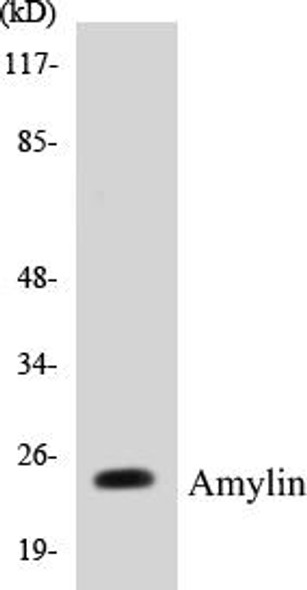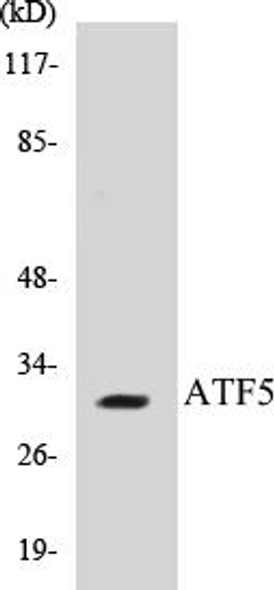Description
EPHB6 Colorimetric Cell-Based ELISA Kit
The EPHB6 (Ephrin Type-B Receptor 6) Colorimetric Cell-Based ELISA Kit is a cutting-edge assay designed for the accurate measurement of EPHB6 levels in cell lysates and tissue samples. This kit offers exceptional sensitivity and specificity, allowing for precise and reliable results in a variety of experimental settings.EPHB6 is a key player in cell signaling pathways, particularly in processes such as cell adhesion, migration, and differentiation.
Dysregulation of EPHB6 has been implicated in various diseases, including cancer and neurological disorders, making it a valuable target for research and potential therapeutic interventions.With the EPHB6 Colorimetric Cell-Based ELISA Kit, researchers can study the role of EPHB6 in cellular processes and disease development with confidence, paving the way for new insights and discoveries in the field of biomedicine.
| Product Name: | EPHB6 Colorimetric Cell-Based ELISA Kit |
| Product Code: | CBCAB00644 |
| ELISA Type: | Cell-Based |
| Target: | EPHB6 |
| Reactivity: | Human, Mouse, Rat |
| Dynamic Range: | > 5000 Cells |
| Detection Method: | Colorimetric 450 nmStorage/Stability:4°C/6 Months |
| Format: | 96-Well Microplate |
The EPHB6 Colorimetric Cell-Based ELISA Kit is a convenient, lysate-free, high throughput and sensitive assay kit that can detect EPHB6 protein expression profile in cells. The kit can be used for measuring the relative amounts of EPHB6 in cultured cells as well as screening for the effects that various treatments, inhibitors (ie siRNA or chemicals), or activators have on EPHB6.
Qualitative determination of EPHB6 concentration is achieved by an indirect ELISA format. In essence, EPHB6 is captured by EPHB6-specific primary antibodies while the HRP-conjugated secondary antibodies bind the Fc region of the primary antibody. Through this binding, the HRP enzyme conjugated to the secondary antibody can catalyze a colorimetric reaction upon substrate addition. Due to the qualitative nature of the Cell-Based ELISA, multiple normalization methods are needed:
| 1. | A monoclonal antibody specific for human GAPDH is included to serve as an internal positive control in normalizing the target absorbance values. |
| 2. | Following the colorimetric measurement of HRP activity via substrate addition, the Crystal Violet whole-cell staining method may be used to determine cell density. After staining, the results can be analysed by normalizing the absorbance values to cell amounts, by which the plating difference can be adjusted. |
| Database Information: | Gene ID: 2051, UniProt ID: O15197, OMIM: 602757, Unigene: Hs.380089 |
| Gene Symbol: | EPHB6 |
| Sub Type: | None |
| UniProt Protein Function: | EphB6: Kinase-defective receptor for members of the ephrin-B family. Binds to ephrin-B1 and ephrin-B2. Modulates cell adhesion and migration by exerting both positive and negative effects upon stimulation with ephrin-B2. Inhibits JNK activation, T-cell receptor-induced IL-2 secretion and CD25 expression upon stimulation with ephrin-B2. Belongs to the protein kinase superfamily. Tyr protein kinase family. Ephrin receptor subfamily. 3 isoforms of the human protein are produced by alternative splicing. |
| UniProt Protein Details: | Protein type:Protein kinase, TK; Membrane protein, integral; Protein kinase, tyrosine (receptor); Kinase, protein; EC 2.7.10.1; TK group; Eph family Chromosomal Location of Human Ortholog: 7q33-q35 Cellular Component: cytosol; extracellular region; plasma membrane Molecular Function:receptor activity Biological Process: ephrin receptor signaling pathway |
| NCBI Summary: | This gene encodes a member of a family of transmembrane proteins that function as receptors for ephrin-B family proteins. Unlike other members of this family, the encoded protein does not contain a functional kinase domain. Activity of this protein can influence cell adhesion and migration. Expression of this gene is downregulated during tumor progression, suggesting that the protein may suppress tumor invasion and metastasis. Alternative splicing results in multiple transcript variants. [provided by RefSeq, Jul 2013] |
| UniProt Code: | O15197 |
| NCBI GenInfo Identifier: | 294862532 |
| NCBI Gene ID: | 2051 |
| NCBI Accession: | O15197.4 |
| UniProt Secondary Accession: | O15197,Q2TB23, Q2TB24, A4D2I7, A8CDT5, D3DXD3, |
| UniProt Related Accession: | O15197 |
| Molecular Weight: | 57,498 Da |
| NCBI Full Name: | Ephrin type-B receptor 6 |
| NCBI Synonym Full Names: | EPH receptor B6 |
| NCBI Official Symbol: | EPHB6 |
| NCBI Official Synonym Symbols: | HEP |
| NCBI Protein Information: | ephrin type-B receptor 6 |
| UniProt Protein Name: | Ephrin type-B receptor 6 |
| UniProt Synonym Protein Names: | HEP; Tyrosine-protein kinase-defective receptor EPH-6 |
| Protein Family: | Ephrin type-B receptor |
| UniProt Gene Name: | EPHB6 |
| UniProt Entry Name: | EPHB6_HUMAN |
| Component | Quantity |
| 96-Well Cell Culture Clear-Bottom Microplate | 2 plates |
| 10X TBS | 24 mL |
| Quenching Buffer | 24 mL |
| Blocking Buffer | 50 mL |
| 15X Wash Buffer | 50 mL |
| Primary Antibody Diluent | 12 mL |
| 100x Anti-Phospho Target Antibody | 60 µL |
| 100x Anti-Target Antibody | 60 µL |
| Anti-GAPDH Antibody | 60 µL |
| HRP-Conjugated Anti-Rabbit IgG Antibody | 12 mL |
| HRP-Conjugated Anti-Mouse IgG Antibody | 12 mL |
| SDS Solution | 12 mL |
| Stop Solution | 24 mL |
| Ready-to-Use Substrate | 12 mL |
| Crystal Violet Solution | 12 mL |
| Adhesive Plate Seals | 2 seals |
The following materials and/or equipment are NOT provided in this kit but are necessary to successfully conduct the experiment:
- Microplate reader able to measure absorbance at 450 nm and/or 595 nm for Crystal Violet Cell Staining (Optional)
- Micropipettes with capability of measuring volumes ranging from 1 µL to 1 ml
- 37% formaldehyde (Sigma Cat# F-8775) or formaldehyde from other sources
- Squirt bottle, manifold dispenser, multichannel pipette reservoir or automated microplate washer
- Graph paper or computer software capable of generating or displaying logarithmic functions
- Absorbent papers or vacuum aspirator
- Test tubes or microfuge tubes capable of storing ≥1 ml
- Poly-L-Lysine (Sigma Cat# P4832 for suspension cells)
- Orbital shaker (optional)
- Deionized or sterile water
*Note: Protocols are specific to each batch/lot. For the correct instructions please follow the protocol included in your kit.
| Step | Procedure |
| 1. | Seed 200 µL of 20,000 adherent cells in culture medium in each well of a 96-well plate. The plates included in the kit are sterile and treated for cell culture. For suspension cells and loosely attached cells, coat the plates with 100 µL of 10 µg/ml Poly-L-Lysine (not included) to each well of a 96-well plate for 30 minutes at 37°C prior to adding cells. |
| 2. | Incubate the cells for overnight at 37°C, 5% CO2. |
| 3. | Treat the cells as desired. |
| 4. | Remove the cell culture medium and rinse with 200 µL of 1x TBS, twice. |
| 5. | Fix the cells by incubating with 100 µL of Fixing Solution for 20 minutes at room temperature. The 4% formaldehyde is used for adherent cells and 8% formaldehyde is used for suspension cells and loosely attached cells. |
| 6. | Remove the Fixing Solution and wash the plate 3 times with 200 µL 1x Wash Buffer for five minutes each time with gentle shaking on the orbital shaker. The plate can be stored at 4°C for a week. |
| 7. | Add 100 µL of Quenching Buffer and incubate for 20 minutes at room temperature. |
| 8. | Wash the plate 3 times with 1x Wash Buffer for 5 minutes each time. |
| 9. | Add 200 µL of Blocking Buffer and incubate for 1 hour at room temperature. |
| 10. | Wash 3 times with 200 µL of 1x Wash Buffer for 5 minutes each time. |
| 11. | Add 50 µL of 1x primary antibodies (Anti-EPHB6 Antibody and/or Anti-GAPDH Antibody) to the corresponding wells, cover with Parafilm and incubate for 16 hours (overnight) at 4°C. If the target expression is known to be high, incubate for 2 hours at room temperature. |
| 12. | Wash 3 times with 200 µL of 1x Wash Buffer for 5 minutes each time. |
| 13. | Add 50 µL of 1x secondary antibodies (HRP-Conjugated AntiRabbit IgG Antibody or HRP-Conjugated Anti-Mouse IgG Antibody) to corresponding wells and incubate for 1.5 hours at room temperature. |
| 14. | Wash 3 times with 200 µL of 1x Wash Buffer for 5 minutes each time. |
| 15. | Add 50 µL of Ready-to-Use Substrate to each well and incubate for 30 minutes at room temperature in the dark. |
| 16. | Add 50 µL of Stop Solution to each well and read OD at 450 nm immediately using the microplate reader. |
(Additional Crystal Violet staining may be performed if desired – details of this may be found in the kit technical manual.)






